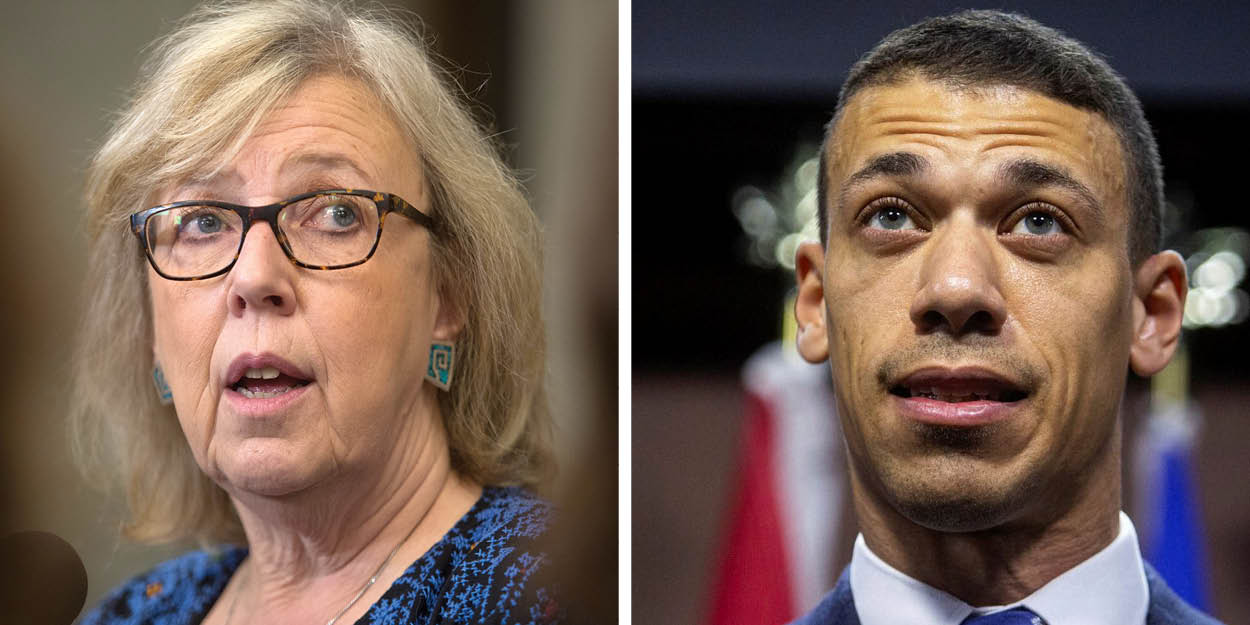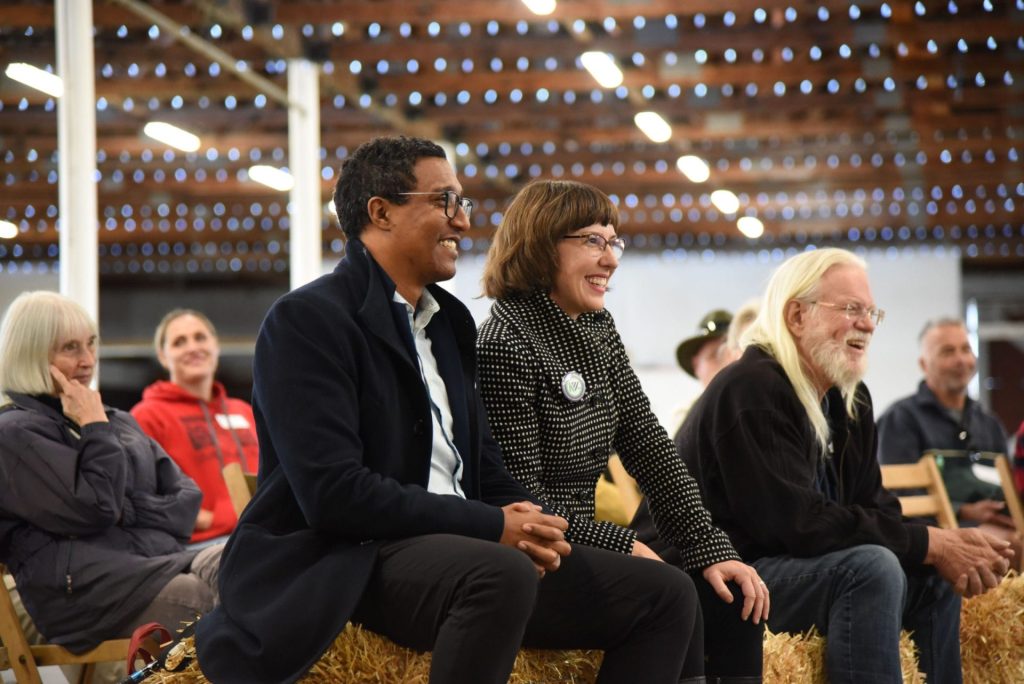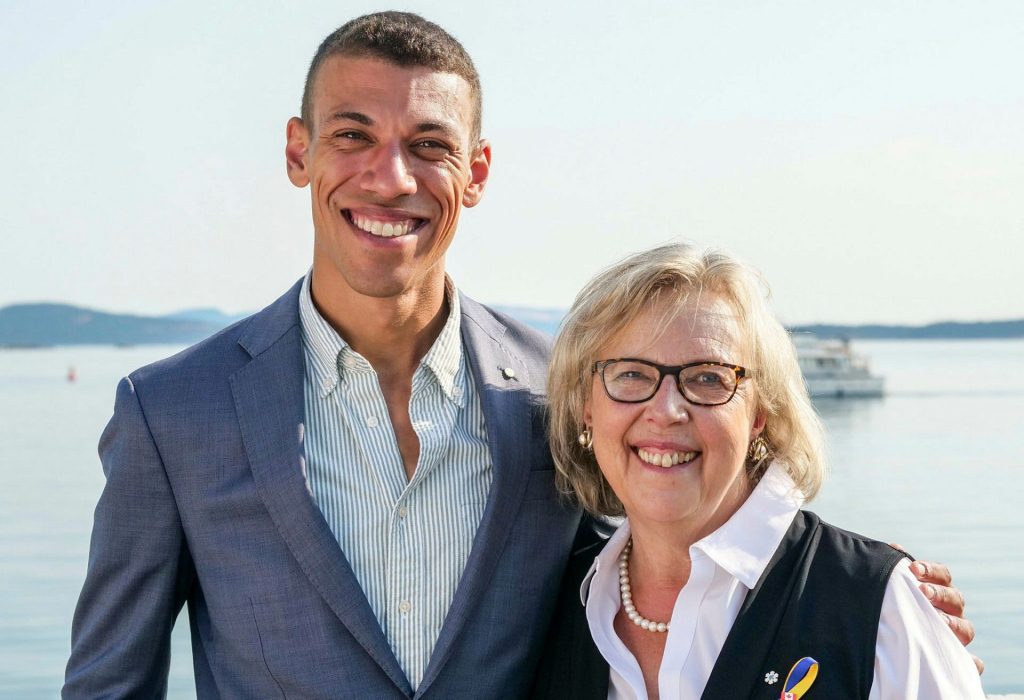One year after leadership vote, Greens yet to amend constitution, but still moving towards co-leadership

A year after the Green Party restored Elizabeth May to its top job on a platform of moving the party towards co-leadership, the party still appears to be headed in that direction, but there remains “a lot of contention” about what that arrangement will look like, says one former leadership candidate.
The party’s 2022 leadership vote, which ended on Nov. 19 last year, concluded with May (Saanich—Gulf Islands, B.C.) finishing first out of a field of six candidates. Former journalist and human rights activist Jonathan Pedneault, who ran on a slate with May seeking to eventually become co-leader, finished third. Another pair seeking co-leadership, Anna Keenan and Chad Walcott, finished second and fourth respectively. Simon Gnocchini-Messier and Sarah Gabrielle Baron, who each sought solo leadership, finished fifth and sixth. Altogether, on the first ballot, just under 90 per cent of voters cast a ballot for a candidate who supported a co-leadership model.

Both of the pairs seeking co-leadership in the race approached it with the plan that—because the Green Party’s constitution does not currently allow such an arrangement—if a member of their slate won the race they would appoint their running mate as deputy leader, and then work on moving the party towards a constitutional amendment that instituted co-leadership. With May’s victory in the race, Pedneault has been serving as deputy leader for the past year.
Amending the constitution is a lengthy process in the Green Party, requiring two separate votes in order to ultimately be ratified. The first of those was set to take place at an AGM this month, but has been delayed until February 2024, so party volunteers can focus on the Ontario provincial byelection in Kitchener Centre, Ont.—a seat held federally by Green MP Mike Morrice. That means if the party’s constitution is successfully changed, there could be less than a year left in the lifecycle of the current Parliament by the time that occurs.
May and Pedneault say they are already functioning as co-leaders on a de facto basis.
In a joint interview with The Hill Times, they said one year in, they are happy with how this is working, and believe there remains strong support in the party for formalizing the co-leadership model.
“It’s such a different experience for me,” said May, comparing the new structure to her first stint as party leader from 2006-2019. She said sharing the workload when it comes to tasks like writing about the party’s position on various issues is one of the major upsides. She is also looking forward to doing a cross-country tour with Pedneault in 2024.
“Elizabeth and I very much share the work right now,” added Pedneault. “So we’ll see how it goes with these amendments, but we’re confident that members will—given the results of the leadership race—be positively supportive of our proposal.”
A motion to ‘institutionalize’ the results of the leadership race
There are several competing motions on the table for the AGM that advance different visions of how the co-leadership set-up would work. One of those motions is put forward by Pedneault.
He describes it as an approach that “institutionalizes the results of the leadership race that took place last year”—meaning that it would create a path for him move directly into the co-leadership role once it is created. This is one of the elements that is contentions among some fellow Greens.
“It’s really a motion to institutionalize how Elizabeth and I have de facto been working over the past year with good results,” he told The Hill Times. “And I think members are appreciative of that.”

Keenan told The Hill Times that she also believes the membership is broadly supportive of allowing co-leadership, and that May and Pedneault have been effectively modelling the advantage of sharing leadership. However, she said there are four key issues that cut across the different proposals, which the membership must weigh-in on to determine what form the co-leadership will take.
One of those is whether or not Pedneault should move directly into the co-leadership spot, while the other three are more long-term factors.
“There is a lot of contention about what the details could look like of a co-leadership model,” she said.
Keenan said she doesn’t want to see short-term considerations overtake picking a model that will serve the party well in the long-term, but cautions against Pedneault stepping directly into the co-leadership role.
‘Standing on the national stage’ requires a leader ‘formally elected into that role’
“I’ve seen quite a bit of pushback from party members about that question. But then I’ve also seen supporters of their campaign who say, ‘Hey, it’s no big deal,’” said Keenan. “I do feel that it would open the party up to significant criticism, if there was somebody standing on the national stage who had not won an election of their own membership.”
Were Pedneault to move into the official co-leadership role, there is a real possibility he could find himself standing on the national stage, including during the leadership debates. During a writ period, May and Pedneault plan to designate one co-leader to step forward and take on official functions such as the signing of nomination papers for Elections Canada and appearing on stage during the national leadership debates.
In the event of a snap election before the Greens have amended their constitution, May would have to fulfill this role. But if the current Parliament lasts long enough for the amendments to be completed, May has said she would be interested to see Pedneault take on that role. As co-leaders, the pair would decide who would step forward, and then ask the party to ratify this choice.
“I quite deliberately ran with JP as a partner, and one reason is—not to tick boxes about who he is—but he’s young,” said May. “And I think that youth in leadership is really important.”
“I’m not old, of course—I’m only 69,” she added. “But I think it’ll give people a lot more confidence in our party, to see that we have a plan, that we’re moving to younger leadership.”
If the party picks a model where the co-leaders are chosen as a pair—which Pedneault’s model calls for—Keenan said that could create an expectation for May to seek re-election to the leadership role too.
However, as the election draws nearer, Keenan also sees some room for accommodation.
“We could have a transitional allowance,” she said. “Let’s say, we get to … February 2025 and we know that there’s going to be a fall election, then, members might at that stage support a transitional arrangement where Jonathan is appointed to a co-leadership position for the next election, in the short term, with the understanding that a leadership race will occur under the new rules immediately after the next federal election.”
‘A really powerful mechanism for leaders to just check themselves’: Keenan
The more long-term issues, said Keenan, hinge on whether co-leadership would be mandatory or optional for future leaders, whether potential co-leaders would run as a slate or separately, and what would happen in the event of the resignation of just one of the two co-leaders.

Keenan believes it is important to choose an approach that makes co-leadership mandatory, and incentivizes the pair to work collaboratively together.
“I think [co-leadership] is a really powerful mechanism for leaders to just check themselves and prevent themselves from becoming too arrogant, which I think we would see in the leadership of both of the blues and reds federally at the moment,” she said.
Keenan believes that while there is strong support in the party to allow co-leadership, some members are advocating to retain the option for solo leadership because they may be interested in holding the position on a solo basis themselves at some point in the future.
She said while many Green parties around the world use co-leadership, they all handle these issues in different ways, and each has its own advantages and disadvantages. For example, she said, the German Green Party elects two co-leaders separately, with the result that one usually comes from the more radical wing of the party, while the other usually comes from the more moderate wing. This can lead to conflict between the two co-leaders, she said.
The policy around resignation can also incentivize greater collaboration, she added.
“If there were a sense that, ‘well, if one of us resigns, that means we’re both gone,’ then it would increase your commitment to making the co-leadership relationship work. Whereas, if one of you resigns, and the other person continues on, it could open the door for relationship dynamics that are less than totally collaborative and productive,” said Keenan.
Pedneault’s motion would see co-leadership become mandatory, and require candidates to seek the role together as slate. However, it would allow for one of the co-leaders to resign, and the remaining leader to appoint a new co-leader—instead of the pair having to resign together.
May said while there are “wrinkles” for the party to sort out, the present circumstances will allow her and Pedneault to continue modelling the possibilities of co-leadership.
“With two years until an election, I do think that we’ve got some real potential to show Canadians the difference between the notion in the other parties of top-down leadership—leader-as-boss—to a more distributive leadership model, which is more reflective of healthy democracy,” said May.
icampbell@hilltimes.com
The Hill Times






 LICENSING
LICENSING PODCAST
PODCAST ALERTS
ALERTS













